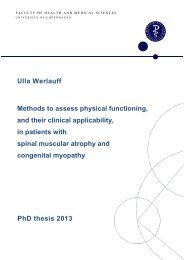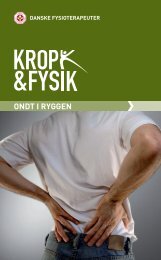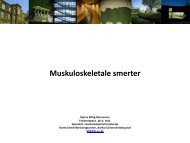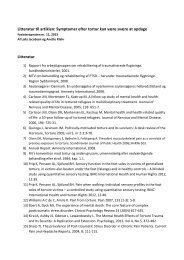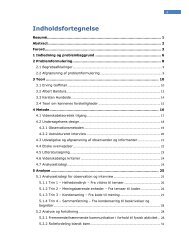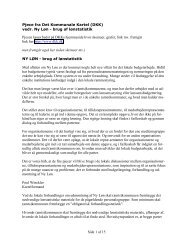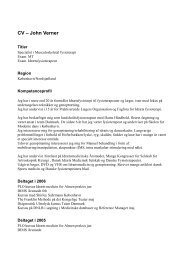Kristian Thorborg's Phd Thesis
Kristian Thorborg's Phd Thesis
Kristian Thorborg's Phd Thesis
Create successful ePaper yourself
Turn your PDF publications into a flip-book with our unique Google optimized e-Paper software.
Patient interviews<br />
The final step in the item generation process was to interview patients with hip and/or groin<br />
disability individually. Individual patients were specifically chosen for an interview, so that there<br />
would be representation of sex, age, type of injury, time from initial injury and severity of<br />
symptoms. The preliminary questionnaire was piloted on patients until data saturation was<br />
achieved. The patients underwent a semi-structured interview in which they were asked to fill out<br />
the preliminary version, while commenting on issues related to questions they felt were missing,<br />
the questionnaire readability and its ease of comprehension. This process included 25 patients, 12<br />
male and 13 female (34±11 years). Twenty patients were interviewed individually before data<br />
saturation was achieved and two items were added, P2 and SP8 (Table 6, Appendix D).<br />
Furthermore, several patients mentioned that they did not understand the meaning of Q3 from<br />
the original HOOS: How much are you troubled with lack of confidence in your hip?[116] Even<br />
though the main purpose of this process was not to omit items we decided that the item had to be<br />
removed because too many patients did not understand the meaning of the question. This new<br />
preliminary version was piloted on five patients and did not require further modification. The<br />
preliminary questionnaire consisted after item generation of 52 items in five subscales (Symptoms<br />
(7), Pain (13), ADL (17), Sport/Rec (10), QOL (5).<br />
Methodological testing and evaluation of measurement qualities of the new<br />
patient-reported questionnaire using the COSMIN checklist<br />
Internal consistency<br />
Internal consistency is the degree of interrelatedness among the items.[1]. A principal component<br />
factor analysis was performed on the individual subscales to assess their structural validity. Failure<br />
to load on a single major factor suggests that the items do not all measure the same construct.<br />
Chronbachs alfa was calculated per subscale and a score above 0.70 was taken as an indication of<br />
sufficient homogeneity of the items in the subscale.[99,122]<br />
Test-retest reliability<br />
Test-retest reliability is the extent to which scores for the same patients are unchanged for<br />
repeated measurements over time.[1] Intraclass Correlation Coefficients (ICC) were reported and<br />
35



